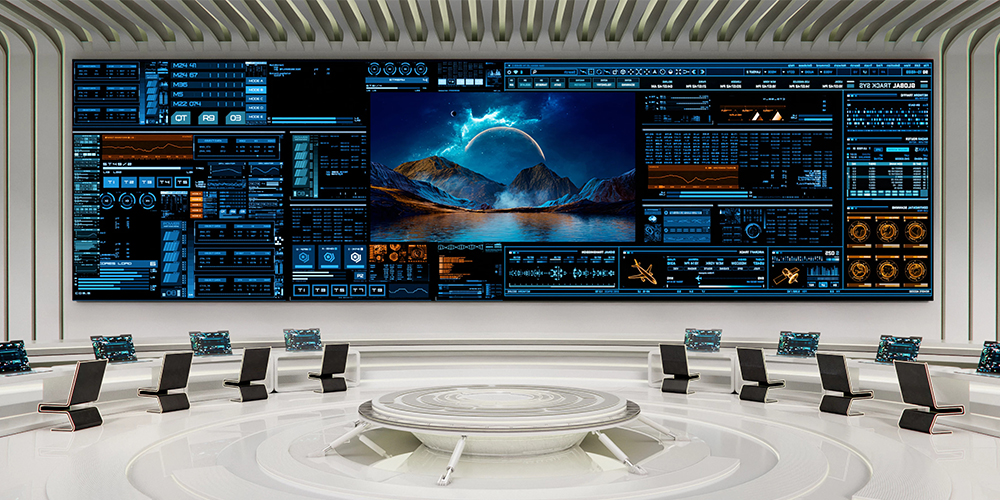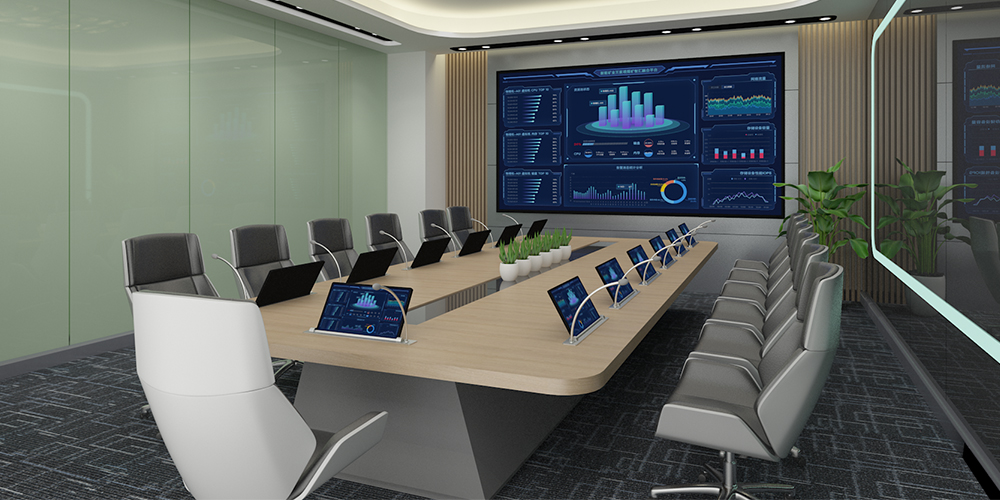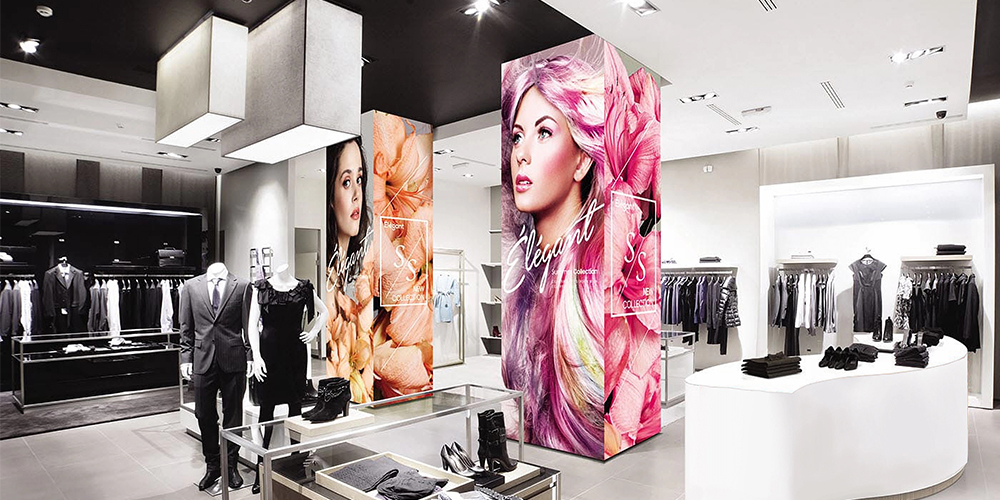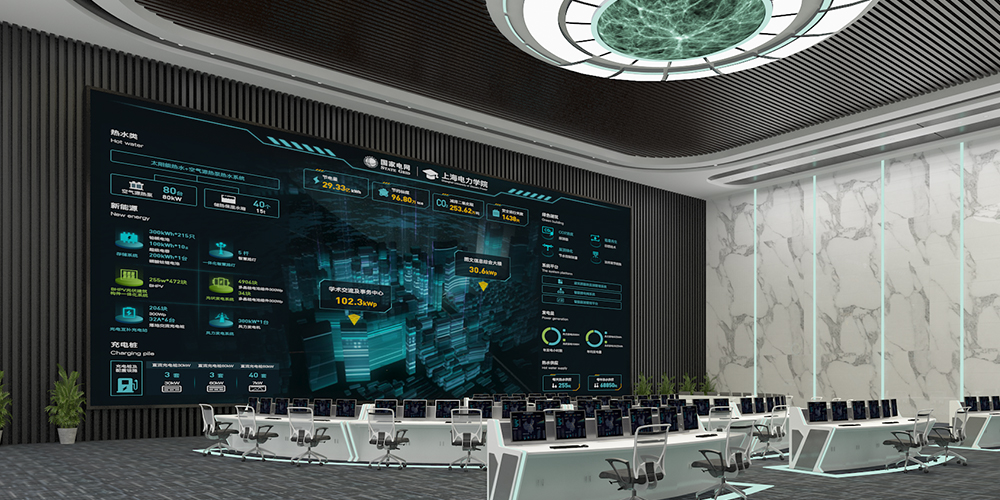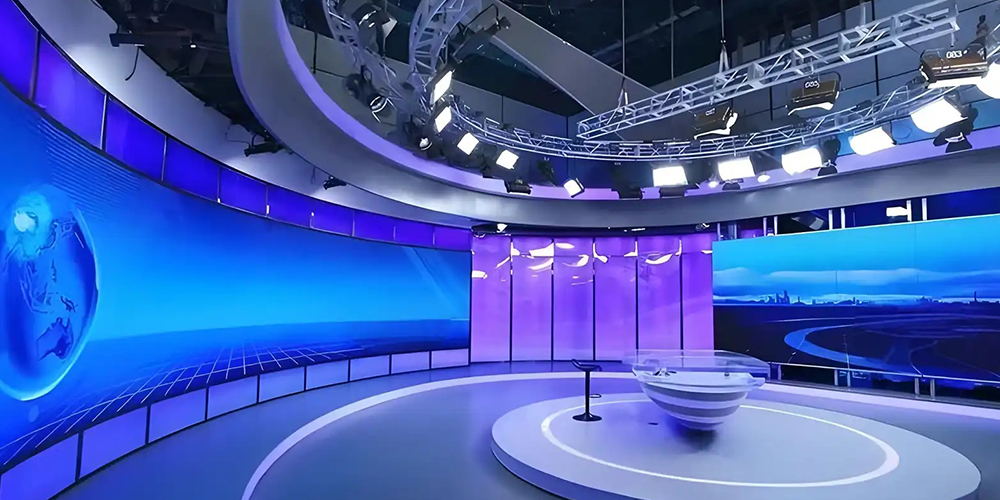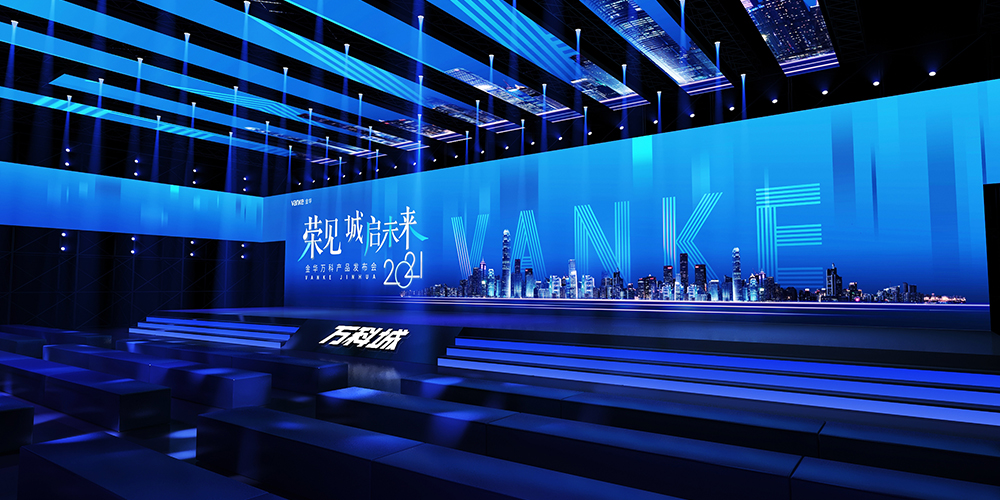In the digital age, high-definition visual experience has become the standard in all walks of life, and high resolution LED screens are the core driving force of this trend. Whether it is commercial advertising, stage performances, sports stadiums, or command and control centers, high resolution LED screens can bring users an immersive visual feast with excellent picture quality, high brightness and seamless splicing technology.
This guide will take you deep into the key points of high resolution LED screens, including its technical principles, advantages, applications and purchasing suggestions, to help you fully grasp the essence of this advanced display technology.
Table of Contents
1.What is a high resolution LED screen ?
2.What is the principle of high resolution LED screen ?
3.Advantages of high resolution LED screens
4.Application of high resolution LED screen
5.Why are high resolution LED screens becoming more and more popular?
6.What to consider when choosing a high resolution LED screen ?
7.In conclusion
1.What is a high resolution LED screen ?
High resolution LED display refers to LED display devices with high pixel density and clear and delicate images. They are usually used in scenes that require close viewing or high quality image display. Its core indicator is “dot pitch”, that is, the distance between two adjacent pixels. The smaller the dot pitch, the higher the resolution and the finer the image. Common high resolution LED screen models such as P1.25, P1.56, P1.86, etc. are suitable for conference rooms, command centers, TV studios and other places.
In addition, high resolution LED screens also have the characteristics of high refresh rate, high grayscale level, wide color gamut, etc., which can achieve smoother dynamic images and more realistic color reproduction. With the advancement of technology, new technologies such as Mini LED and Micro LED are also driving high resolution LED screens to develop in the direction of smaller pitch and higher contrast to meet various high-end display needs.
2.What is the principle of high resolution LED screen ?
1. Pixel composition
Each pixel of a high resolution LED screen is composed of three-color LED chips: red (R), green (G), and blue (B). By adjusting the brightness combination of the three colors and using the additive color mixing effect of the human eye on colors, a full-color picture can be displayed. For example, red and green light up at the same time to display yellow, and three colors light up at the same time to display white.
2. Drive control
When a high resolution LED screen receives a video signal, the internal control system (such as the receiving card and driver IC) decodes the signal and uses PWM (pulse width modulation) technology to control the current switching time of each LED. This method can achieve 16-bit or even higher grayscale levels, ensuring a smoother and more natural color transition.
3. High-resolution realization
The key to achieving high resolution is to use extremely small pixel pitch (such as P1.2, P0.9, etc.). The smaller the pixel pitch, the more pixels per unit area, and the finer the picture performance. With Mini LED and Micro LED technology, high-resolution LED screens can easily support 4K or even 8K ultra-high-definition display requirements and meet various high-end application scenarios.
4. Visual synthesis
In order to avoid screen flickering, high resolution LED screens usually have high refresh rates (such as 3840Hz and above) and stable scanning drive technology. Ultimately, through the coordinated work of thousands of pixels, continuous, high-definition dynamic images are presented, bringing an immersive visual experience.
3. Advantages of high resolution LED screens
1) Ultra-high-definition image quality, richer details
The core feature of high resolution LED screens is that the pixel pitch is extremely small (such as P1.2, P0.9 or even smaller), and the pixel density per unit area is greatly improved, making the display more delicate and grainless. Whether it is text, images or videos, they can present clearer edges and richer details, especially suitable for the playback of 4K/8K ultra-high-definition content, meeting the extremely high requirements for image quality in professional film and television, medical imaging, high-end conferences and other scenes.
2) Wider color gamut and higher contrast
Using high-quality LED chips (such as Mini LED or Micro LED) and advanced driving technology, high resolution LED screens can cover DCI-P3 and even BT.2020 wide color gamut, with more realistic and vivid colors. At the same time, due to the self-luminous characteristics of LED, black is purer, the contrast can reach more than 1,000,000:1, the picture layering is stronger, and the HDR effect is better.
3) Seamless splicing, more complete large-screen display
Compared with traditional LCD or projection, LED screen adopts modular design, which can achieve seamless splicing and eliminate visual interference of physical borders. It is particularly suitable for ultra-large-size display needs, such as command and dispatch centers, stage backgrounds, digital exhibition halls, etc., to ensure the integrity and unity of the picture.
4) High brightness, low power consumption, adaptable to various environments
High resolution LED screens usually have a brightness of 1000-5000nit, which is still clearly visible in strong light environments. They also support dynamic energy-saving technology, which is more energy-efficient than traditional displays. In addition, LEDs have a long lifespan (more than 100,000 hours) and low maintenance costs, making them more economical to use in the long term.
4.Application of high resolution LED screen
High resolution LED screens are being widely used in many professional fields due to their high clarity, bright colors and flexible installation methods.
(1) Corporate offices
In modern office environments, high resolution LED screens are often used in conference rooms and reception halls to display company promotional videos, conference presentations, data charts, etc. Their high brightness and clear image quality ensure accurate communication of information even in bright environments, helping to enhance corporate image and office efficiency.
(2) Retail environment
In shopping malls, specialty stores, windows and other retail venues, high-definition LED screens can play promotional information, new product advertisements and interactive content to attract customers and enhance brand appeal. Its flexible size and seamless splicing advantages make it an ideal choice for creating an immersive consumer experience.
(3) Control room
High resolution LED screens are indispensable equipment for monitoring and command centers. They can display high-definition video surveillance images, data charts, and operation interfaces in real time, ensuring that all types of information are presented accurately and synchronously, improving command and dispatch efficiency and safety management capabilities.
(4) Broadcast studio
In television stations and video production environments, high-definition LED screens are used as background walls. They can quickly switch between virtual scenes and real shots, presenting high-quality visual effects. They are an important tool for building modern studios.
(5) Events and Exhibitions
In trade shows, press conferences and on-site events, high resolution LED screens are widely used as the main background, both sides of the stage or in interactive areas to play demonstration content, brand promotion videos and real-time images, enhancing the audience experience and event effect, and facilitating information dissemination and brand promotion.
5.Why are high resolution LED screens becoming more and more popular?
1. Ultra-high definition perfect picture quality
The high resolution LED screen has a high pixel density, the picture is clearer and more delicate, the color level is rich, and the details are precise. Whether it is displaying high-definition pictures, videos or real-time data, it can present impeccable visual effects. It is especially suitable for high-end conferences, exhibitions, virtual shooting and other places with extremely high requirements for image quality.
2. Easy installation
Modern high resolution LED screens adopt modular design, combined with a thin and light cabinet structure, which greatly simplifies the installation process. Not only does it support front and rear maintenance, but it is also suitable for a variety of installation methods such as wall mounting, hanging mounting, and embedded mounting, which saves manpower and speeds up deployment efficiency.
3. High refresh rate
High resolution LED screens are usually equipped with high refresh rate driver ICs (such as 3840Hz and above), which can effectively eliminate picture jitter and ghosting, ensuring smooth and stable pictures. They are particularly suitable for scenes with extremely high requirements for picture stability, such as live broadcasts and video shooting.
4. Golden ratio design of cabinets
The LED screen adopts a box structure with a golden ratio design (such as 16:9, 4:3), which is not only beautiful, but also more in line with the conventional video production ratio in content adaptation. It can seamlessly connect 4K or 8K video content to achieve better content filling and display uniformity.
5. Energy-saving and high efficiency, stable operation
The high resolution LED screen uses an efficient power supply system and energy-saving lamp bead technology to reduce energy consumption and operating costs while maintaining high brightness. At the same time, its high-quality heat dissipation structure and stable circuit design also ensure the reliability and safety of long-term operation.
6.What to consider when choosing a high resolution LED screen ?
1. Project Requirements
First of all, we need to clarify the actual application scenarios of LED screens . Different usage environments have different requirements for screen brightness, resolution, protection level, etc.
At the same time, the display area and screen ratio must be determined in order to rationally plan the number of pixels and installation methods to ensure a coordinated and unified overall visual effect.
2. Viewing distance
Viewing distance is a key factor in determining the pixel pitch of an LED screen. The main advantage of a high resolution LED screen is that the picture remains clear and detailed, without noticeable graininess, even when viewed at close range.
Since high resolution LED screens are used in indoor environments, it is usually recommended to choose models with a pixel pitch below P2.5mm to meet the clarity requirements for close viewing. EagerLED provides a variety of high resolution options, including P1.25mm, P1.53mm, 1.86mm, etc., which can flexibly meet the usage requirements of different viewing distances and scenarios.
3. Budget
The cost of high resolution LED panels is relatively high, so budget control is particularly important. Under the premise of ensuring clarity and performance, performance and investment costs can be balanced by reasonably adjusting the pixel pitch, selecting standard size cabinets, or adopting phased construction.
3. Professional LED display manufacturer
Choosing an experienced and technically reliable LED display manufacturer is the key to ensuring product quality and after-sales service. Professional manufacturers can provide customized solutions according to project requirements, assist in installation and commissioning, and provide technical support and maintenance guarantees in the later stage to ensure long-term stable operation.
EagerLED offers a variety of high resolution LED screens that can flexibly meet different application requirements. We will recommend the most suitable solution based on your specific project requirements.
EagerLED recommends high resolution LED screens
1) EA640H1 high resolution indoor LED screen
Full front desk service: The EA640H1 high resolution indoor LED screen is easy and quick to maintain. The LED module connected by the Hub is combined with an electric vacuum clamp, which can be easily replaced by ordinary people.
New and better: The EA640H1 series is optimized based on the EA640F2 series, adopts a hub connection design, thin and light modules, and a simple cabinet structure, making it worthy of your choice.
Large screen splicing: A640H1 high resolution indoor LED screen adopts 4:3 golden ratio design, the box size is 640*480mm, and it is specially designed for various 4:3 and 16:9 LED large screens.
Cabinet details: This cabinet adopts high-standard industry-leading design, and the die-cast aluminum cabinet bottom shell is high-end and atmospheric. Equipped with a quick lock design, installation and assembly are more convenient.
2) Indoor EA169F3 high resolution LED screen
16:9 Lightweight Cabinet: EA169F3 high resolution LED display wall has the size of 600*337.5mm and the aspect ratio of 16:9, which is a perfect replacement for LCD display, fully enjoy your viewing experience.
Full front desk service: EA169F3 high resolution LED screen provides front installation, can be placed against the wall, and is easy and quick to maintain. The front LED module supports hot swapping, and with the electric vacuum suction cup, ordinary people can easily replace it.
Advanced UHD 8K experience: EagerLED LED display improves picture contrast in all aspects, achieving standard 2K, 4K, and 8K resolutions, presenting the most realistic details and brightness levels of any picture.
Unparalleled visual performance: EA169F3 high resolution LED screen, seamless splicing, higher flatness, meets various indoor application scenarios and provides better visual effects.
7.In conclusion
As the demand for high-definition display continues to increase, high resolution LED screens are becoming an ideal choice for various application scenarios. Whether it is a stage performance that pursues the ultimate image quality or a control center that requires accurate information presentation, high resolution LED technology demonstrates excellent expressiveness and flexibility.
EagerLED provides a variety of high resolution LED screen products, covering P1.25mm, P1.56mm, P2mm and other specifications, which can flexibly meet different needs from commercial display to professional applications. If you are interested in high-quality high resolution LED screens, please contact us!




























